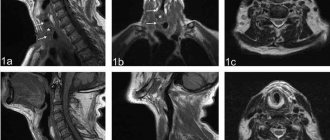Oncological lesions of the throat include various malignant neoplasms that are localized in the area of the pharynx and larynx. This pathology occurs quite often among low-quality tumors. Statistics indicate that this disease occurs 10 times more often in men than in women. Laryngeal cancer at an advanced stage can be fatal, which is why it is so important to diagnose the disease in a timely manner and take all necessary measures. The sooner you start treatment, the better your chances of a full recovery.
Causes
Diseases of the throat and larynx can have various causes. The most common of them:
- viral infection caused by adeno-, rhino-, enterovirus, pathogens of influenza, mumps, parotitis, Epstein-Barr and Coxsackie virus;
- a bacterial infection caused by streptococci, diphtheria pathogens, staphylococci, less commonly gonococci, chlamydia and other microorganisms;
- the effect of toxic or irritating substances - cigarette smoke, exhaust gases, chemical products, soot;
- allergic reaction, cough, sinusitis, gastroesophageal reflux;
- trauma or foreign body penetration, as well as excessive vocal strain.
Treatment of diseases of the throat and larynx should be entrusted to a specialist - an ENT doctor. Correct determination of the cause of the disease is one of the main conditions for recovery.
Examination of the ear, hearing and auditory nerve
Ear and hearing examinations in our clinic will be structured in several directions:
- Study of the structure and functional state of the ear, hearing and auditory nerve;
- Search for the cause of the disease.
The most informative studies: endoscopy of the ear cavity, tympanometry, auiometry, study of evoked potentials. If necessary, in addition to endoscopic examination, tympanometry and audiometry, we will offer additional studies.
Consultation with an otolaryngologist, a set of examinations of the health of the ear, auditory nerve, hearing acuity
During your consultation with an ENT specialist, you will undergo an examination and an initial hearing test. The ENT doctor individually recommends one or more necessary studies. It could be:
- Endoscopy of the ear cavity . For this study, using an endoscope (the thinnest device), your attending physician will conduct a visual examination of the condition of the ear tissues, determine the presence of inflammation and pathological elements in the ear (pus, fungal plaque, etc.).
- Tympanometry allows you to identify disturbances in the functioning of the middle ear and assess the usefulness of the functions performed by the middle ear. Tympanometry is performed at an appointment with an ENT specialist.
- Audiometry is indispensable in the study of hearing acuity. We will offer you audiometry during your consultation.
- The auditory evoked potential test will show how correctly the nerve impulse travels along the auditory nerve to the brain.
- Computed tomography of the temporal bones and hearing organs . Computed tomography is the most convenient method for determining the condition of the temporal bones, soft tissues and diagnosing inflammation or neoplasms that compress the nerve. If necessary, we will offer you specialist assistance.
- MRI brain imaging. With an MRI of the brain, you can see the auditory nerves, the auditory centers of the brain. The temporal bones, in which the peripheral hearing organs lie, are more fully “seen” by computed x-ray tomography.
- A bacteriological study of the ear flora ( bacteriological culture , PCR ) will be needed to select targeted treatment if the ear disease is caused by microbial flora: fungi, streptococci, staphylococci, etc.
- Ultrasound examinations of the vessels of the neck and head can be valuable in cases of hearing impairment and tinnitus, because these symptoms may appear when there is a violation of cerebral circulation.
- Examination for neuroinfections , which may cause inflammation of the auditory nerve.
Main symptoms
Diseases of the throat and other ENT organs are accompanied by the following symptoms:
- pain when swallowing (angina, pharyngitis, laryngitis, foreign body, tuberculosis, tumor);
- sensation of a lump in the throat (tumor, enlarged tonsils, pharyngeal diverticula, gastroesophageal reflux);
- difficulty breathing (angina, paratonsillitis, tumor, abscess, laryngitis, foreign body, diphtheria, Quincke's edema, tuberculosis);
- voice change (trauma, laryngitis, diphtheria, tuberculosis, tumor);
- swallowing disorders (pharyngitis, foreign body, tumor, pharyngeal diverticula).
Symptoms and treatment of diseases of the ENT organs require consultation with a qualified otolaryngologist who is proficient in modern diagnostic methods. Delay in seeing a doctor leads to the development of severe forms of diseases of the throat and larynx.
How to determine the presence of laryngeal cancer?
There are many methods for diagnosing throat cancer. However, before deeper studies, each patient must undergo a visual examination by a specialist and palpation of the neck. The patient’s complaints play an important role in making a diagnosis; they can be used to understand the location of the tumor and the stage of development. All this is important so that a specialist can predict the subsequent development of the tumor.
If the patient feels a lump in the throat and pain when swallowing, then the tumor may be in the vestibular area of the larynx.
When these symptoms are accompanied by pain in the ear, it can be assumed that the neoplasm is located on the lateral wall of the throat on one side. Voice deformation indicates pathology of the vocal tract.
Thus, based on various symptoms, the exact location of the lesion can be determined.
The next informative method is neck palpation, which allows:
- assess the configuration and volume of the tumor;
- determine its displacement relative to neighboring tissues;
- by listening to the patient's breathing and voice, watch out for possible symptoms of stenosis and dysphonia. The patient needs detailed palpation of the lymph nodes.
Laryngeal cancer can metastasize to all lymph nodes. To make a final diagnosis, a general medical examination should be performed.
Most common diseases
The most common diseases of the throat (pharynx) are:
- Acute and chronic pharyngitis
An inflammatory process in the pharynx, accompanied by sore throat, sore throat, and difficulty swallowing. It is caused by a viral or, less commonly, bacterial infection. The treatment uses antibiotics and local therapy - irrigation, rinsing, lozenges and lozenges with antiseptic, anti-inflammatory and analgesic effects.
- Damage from foreign bodies and burns from acids, alkalis, and household chemicals
These conditions require emergency medical attention. Foreign bodies are removed during laryngoscopy. For chemical burns, pharyngeal irrigation, painkillers, and rehydration therapy are prescribed.
- Benign tumors - papilloma, fibroma, neuroma and others
The main symptom of these diseases is difficulty swallowing. With large formations, compression of the respiratory tract is possible. For differential diagnosis with malignant neoplasms, a biopsy is necessary. Treatment is predominantly surgical.
- Malignant tumors – cancer and sarcoma
The diseases cause bleeding, enlarged lymph nodes, and general intoxication of the body. For an accurate diagnosis, an in-depth examination is necessary - a biopsy, CT or MRI of neck tissue. Treatment is complex, its scope depends on the stage of the tumor. The main method of treatment is surgery in combination with radiation.
Diseases of the larynx, the symptoms and treatment of which require consultation with a doctor:
- Acute and chronic laryngitis
The disease is accompanied by a change in voice and sore throat. The main reason is a viral infection. Treatment is predominantly symptomatic, aimed at relieving inflammation and accelerating the regeneration of damaged tissues. Chronic laryngitis, especially occupational laryngitis, requires treatment by a phoniatrist. Acute laryngitis in children can lead to obstruction of the lumen of the larynx and the development of croup, for example, with diphtheria. This condition is life-threatening for the child.
- Abscess and phlegmon
These are purulent-inflammatory diseases that cause breathing problems, severe sore throat, and signs of intoxication. Pathology can cause narrowing of the airways and suffocation. The main method of treatment is surgical opening of the purulent focus, its drainage and antibiotic therapy.
- Benign tumors - fibromas and papillomas, as well as nodules formed due to excessive vocal load
The main symptom is hoarseness or absence of voice (aphonia). Treatment uses local medications, physiotherapy, and removal of tumors using minimally invasive techniques. A course of treatment is being carried out by a phoniatrist.
- Malignant tumors
These dangerous diseases are accompanied by hoarseness, foreign body sensation, and breathing problems. Subsequently, the tumor affects the nearest lymph nodes, and then distant organs, leading to the appearance of cancer intoxication. When the tumor mass disintegrates, bleeding occurs, which is life-threatening. Treatment is surgical, in combination with radiation therapy. In the future, rehabilitation aimed at restoring speech function is required.
- Foreign bodies of the larynx
Usually found in young children and can cause respiratory arrest. Require immediate medical attention with laryngoscopy.
Diseases of the larynx and pharynx can also be associated with tuberculosis or syphilitic lesions, fungal diseases, an allergic reaction, or direct injury to the neck. In all these cases, a thorough diagnosis of the cause of the pathology and treatment according to modern standards is necessary.
Stages of disease development
Depending on the location and volume of the lesions, several stages are identified:
Stage 0
– detection of cancer at this stage is quite rare, since symptoms are practically absent. If, nevertheless, the development of the oncological process is determined in the patient at this stage, then a complete cure can be guaranteed. Survival for 5 years is observed in 100% of cases.
Stage 1
– the neoplasm spreads to the mucous membrane of the throat, but does not affect nearby tissues. Properly prescribed treatment for stage 1 cancer can save the patient’s life for 5 years in 80% of cases.
Stage 2
– cancer spreads to any part of the larynx and completely affects it. The vocal cords are still functioning. The patient survives for at least 5 years in 70% of cases.
Stage 3
– the neoplasm metastasizes and affects neighboring organs. The patient experiences problems with his voice, which may disappear altogether. The 5-year survival rate for this degree of disease is 60%.
Stage 4
– the tumor reaches a large size and can cover the entire larynx. The disease at this stage is practically untreatable. Only painkillers can alleviate the patient's condition. Only 25% of patients can live another 5 years with this diagnosis.
Diagnostics
To diagnose diseases of the throat and larynx, doctors use the following instrumental diagnostic methods:
- pharyngoscopy, which includes examination of all parts of the pharynx using a nasopharyngeal or laryngeal mirror, as well as a special device - an epipharyngoscope;
- laryngoscopy – examination of the larynx using mirrors;
- microlaryngoscopy - direct examination of the walls of the larynx using a microscope;
- fiberoscopy - examination of the larynx using a fiber optic apparatus; During the procedure, you can remove a small foreign body or take a biopsy;
- radiography and computed tomography, including contrast, useful for identifying stenoses, malformations, tumors;
- Magnetic resonance imaging is a safe study, especially informative for soft tissue pathologies, including tumors.
Where to get a CT scan of the throat and larynx

Regardless of the exact reasons for which the patient was prescribed a CT scan of the throat, a fundamentally important point is to find a suitable clinic. She must not only satisfy the patient with her pricing policy, but also perform the examination at the highest level.
Unfortunately, sometimes it is not so easy to make the right choice: some medical centers do not have modern equipment, and tomography performed on old scanners does not provide a complete picture of the existing pathological process. In other clinics, the medical staff does not have sufficient experience, so there is a high probability of making an incorrect diagnosis.
We are pleased to offer our services to patients: on our website, every visitor can see for free a large list of medical clinics, as well as detailed information on each of them.
After selecting the required medical center, you can call the phone number listed on the website to make a preliminary appointment. We provide a discount on CT scanning to everyone who turns to us for help.
By contacting us for help, you can easily decide on the choice of the necessary medical center from a huge list, and also receive a guarantee of the lowest price.
Contraindications
Since this medical procedure is carried out using a tomograph, there is radiation exposure, in addition, in some cases, contrast is introduced, which is a clear reason for refusing this procedure to certain categories of people.
- Pregnant and lactating women.
- Patients with renal or heart failure.
- Children under 14 years old.
- Patients with liver diseases.
- Persons susceptible to allergic reactions to contrast media.
- Persons with hyperkinesis.











